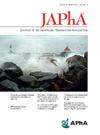美国卫生与公众服务部、美国国防部、美国食品和药物管理局和世界卫生组织基本药物清单的比较。
IF 2.5
4区 医学
Q3 PHARMACOLOGY & PHARMACY
Journal of the American Pharmacists Association
Pub Date : 2025-05-28
DOI:10.1016/j.japh.2025.102427
引用次数: 0
摘要
背景:美国作战人员无法获得高质量的基本药物构成了一个重大的国家安全问题。基本药物清单(EML)包含一个正常运转的卫生系统必须始终可用以满足优先卫生需求的药物。目标:跨机构的基本药物清单比较将有助于决策者集中决策,他们正在努力提供解决方案,通过强调基本药物的国内和国际竞争来加强美国药品供应链。方法:我们从卫生与公众服务部(2022年)、国防部(2023年)、食品和药物管理局(2020年)和世界卫生组织(2023年)鉴定并获得eml。我们将eml导入到Microsoft Excel中,并删除了重复的eml。对每个EML进行分类,以比较EML之间的特征。然后,我们比较了Excel中列表之间的EML数据。出现在所有eml上的项目被归类为第一级药物,出现在任何三个eml上的项目被归类为第二级药物。我们将我们的一级和二级药物清单与FDA和ASHP截至2025年5月9日的当前药物短缺清单进行了比较。结果:我们在这四个清单中的任意三个清单中发现了25种一级药物和74种二级药物。19种一级药物(76%)和27种二级药物(36%)目前短缺。12种一级药物和8种二级药物的配方短缺已超过5年。结论:对于作战准备所必需的药品,安全的国内供应链对于最大限度地减少国家安全风险至关重要。对这些机构的基本药物清单进行比较,将有助于决策者制定有针对性的决策,他们正在努力提供解决方案,通过强调基本药物的国内和国际竞争来加强美国药品供应链。本文章由计算机程序翻译,如有差异,请以英文原文为准。
A comparison of the essential medicines lists of the U.S. Department of Health and Human Services, the U.S. Department of Defense, the U.S. Food and Drug Administration, and the World Health Organization
Background
An inability to obtain high-quality essential medications for U.S. warfighters constitutes a significant national security concern. An essential medicines list (EML) contains the medicines that a functioning health system must always have available to satisfy priority health needs.
Objective(s)
A comparison of EMLs across U.S. agencies will facilitate focused decision-making for policymakers who are working to provide solutions to strengthen the U.S. pharmaceutical supply chain by highlighting the national and international competition for essential medicines.
Methods
We identified and obtained EMLs from the Department of Health and Human Services (2022), the Department of Defense (2023), the Food and Drug Administration (2020), and the World Health Organization (2023). Each EML was categorized to compare characteristics across EMLs. We then compared EML data between lists. Items that were present on all EMLs were classified as Tier 1 medicines and items that were present on any 3 EMLs were classified as Tier 2 medicines. We compared our list of Tier 1 and Tier 2 medicines with both the FDA and ASHP lists of current drug shortages as of May 9, 2025.
Results
We identified 25 Tier 1 medicines and 74 Tier 2 medicines. Nineteen Tier 1 medicines (76%) and 27 Tier 2 medicines (36%) were currently in shortage. Twelve Tier 1 and 8 Tier 2 medicines have formulations that have been in shortage for over 5 years.
Conclusion
For medicines essential for operational readiness, a secure domestic supply chain is vital to minimize risk to national security. Identification of these high-priority medicines are intended to facilitate focused decision-making for policymakers who are working to provide solutions to strengthen the pharmaceutical supply chain both within the DoD and throughout the U.S.
求助全文
通过发布文献求助,成功后即可免费获取论文全文。
去求助
来源期刊
CiteScore
3.30
自引率
14.30%
发文量
336
审稿时长
46 days
期刊介绍:
The Journal of the American Pharmacists Association is the official peer-reviewed journal of the American Pharmacists Association (APhA), providing information on pharmaceutical care, drug therapy, diseases and other health issues, trends in pharmacy practice and therapeutics, informed opinion, and original research. JAPhA publishes original research, reviews, experiences, and opinion articles that link science to contemporary pharmacy practice to improve patient care.

 求助内容:
求助内容: 应助结果提醒方式:
应助结果提醒方式:


